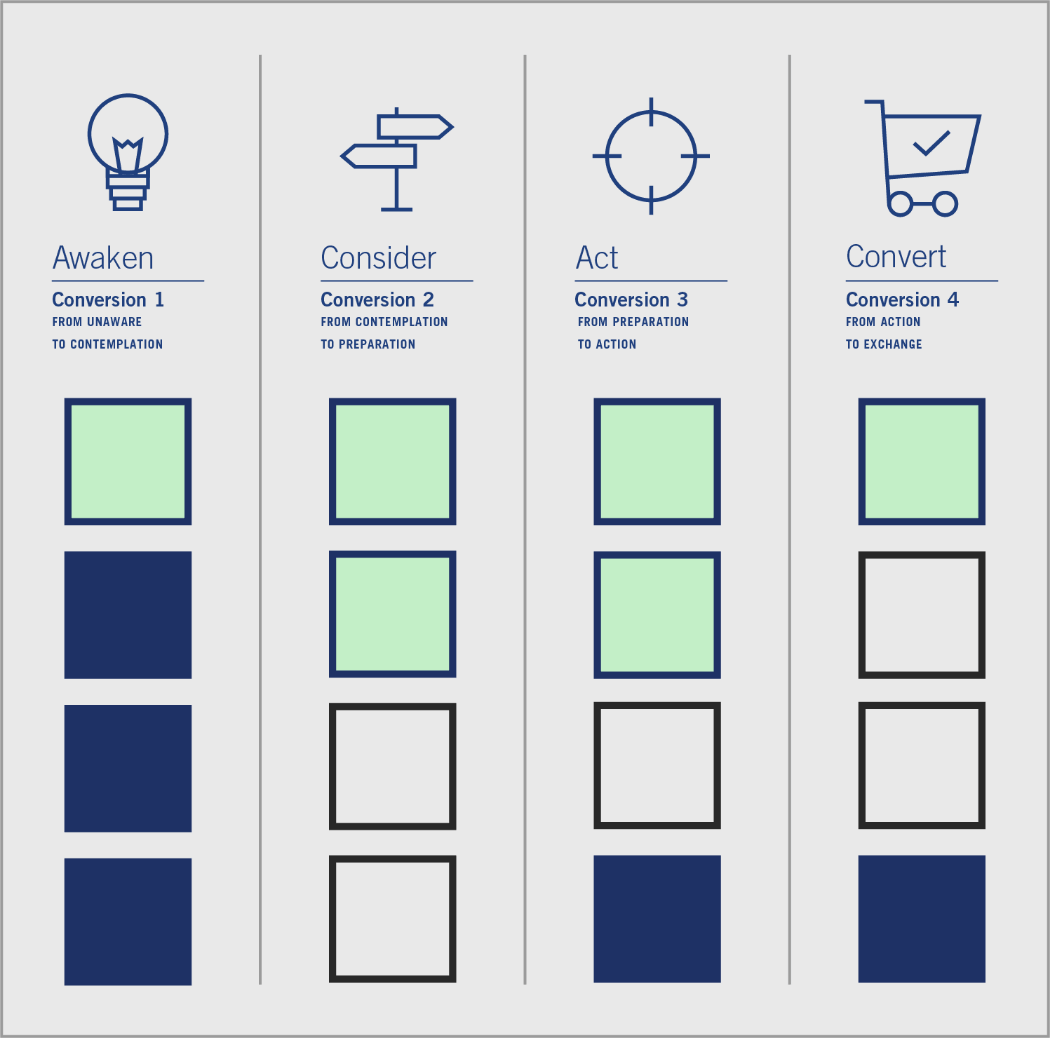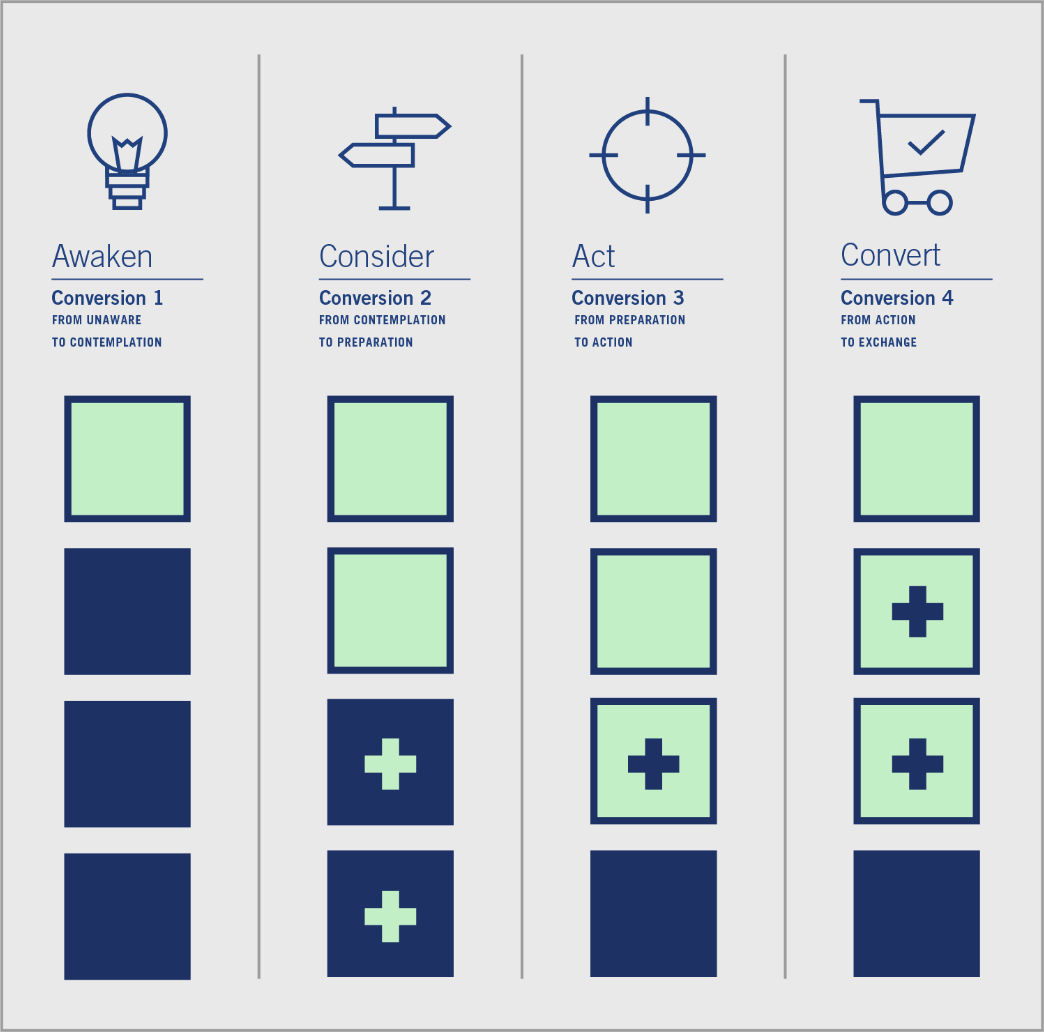Sales & Marketing Alignment
Overcoming the Barriers That Block Your Sales
You aren’t making your numbers. Your most effective sales strategy is brute force. Your marketing is creating activity but no measurable results. You suspect you are wasting money, but you don’t know where. Life is hard. But it doesn’t have to be.
The Sales Barrier Analysis
This product is typically the initial phase of our new-client relationships. Our process can be applied organization-wide or to a specific product or service. We will define the scope of the project in advance — does it cover user experience? Operations? Distribution?
The process is simple, though comprehensive. It includes a one-day working session with the leadership of your organization, including both marketing and sales.
The three essential steps in the process

1 Analyze your current sales and marketing structure.
We start with the status quo. What do your current marketing strategies look like? How does your sales organization work currently? We’ll map out those strategies and behaviors relative to the Customer Decision Journey (CDJ).
STRUCTURES TO MAP
- Your organizational structure
- Processes and responsibilities
- Short- and long-term marketing strategies
- Tools and tactics
- Essential messaging (positioning)

2 Map your current state to the customer decision journey.
Neuroscience teaches us that people need specific kinds of information, at specific points in the buying process. At this phase of the project, we will map out your existing sales and marketing tools, relative to the CDJ.
We’ll ask hard questions:
- Are you presenting the right information at the right time?
- Are you using communication processes that we know work at each step in the CDJ?

3 Make recommendations to align your sales and marketing efforts around your prospects.
This might mean additional strategies and tactics or repurposing existing materials to more effective use. Inevitably, you will execute this plan over several years, as you unify your sales and marketing efforts around the needs of your prospects.
 Sales Barriers:
Sales Barriers:These are points where the wrong information or the right information at the wrong time prevent prospects from making a decision. For example, awareness ads are of no help to a prospect asking for a proposal.
 Sales Gaps:
Sales Gaps:Gaps happen when you are not presenting information that a prospect needs to make a decision. Consider a prospect who is comparing your product or service to their traditional source. They don’t know you. To buy from you is a risk. A testimonial from a known peer might provide the reassurance they need to move forward. Without it, the risk might drive them to stick with the status quo.

“The difference in our business has been profound.”
Luke AllenSVP of Sales at OHD“For years, our sales efforts looked like most companies. Everyone was an equal prospect. We were expected to call everyone, which is an impossibility, of course. The symptoms of our dysfunctional model will look familiar to most everyone:
We wasted countless hours nurturing leads that were never going to buy.
We brought prospects right up to the decision point, only for them to vanish without a cause.
When we made our numbers, it was through brute force.
There was no real connection between marketing and the leads we were creating and our sales efforts. It was like two separate organizations.
The biggest single change we made in our organization was to realign our organization to bring sales and marketing together. We now look at the two specialties as one continuum. Not separate, just filling separate roles in the same process.
Working with FitzMartin, we’ve transformed both groups. Marketing is producing more and better leads. And our sales efforts are easier and more productive.”
Our Work
-
 BBVA Compass Smart Pursuits
“Yes, the results were good. As usual, you did outstanding work for us.”
BBVA Compass Smart Pursuits
“Yes, the results were good. As usual, you did outstanding work for us.”
-
 SPOC Automation Sales Enablement
“If we can provide you this information, will you present our offer to your boss?”
SPOC Automation Sales Enablement
“If we can provide you this information, will you present our offer to your boss?”
-
 The Washington Center
Rapid growth comes from sales and marketing in alignment with the prospect.
The Washington Center
Rapid growth comes from sales and marketing in alignment with the prospect.


